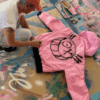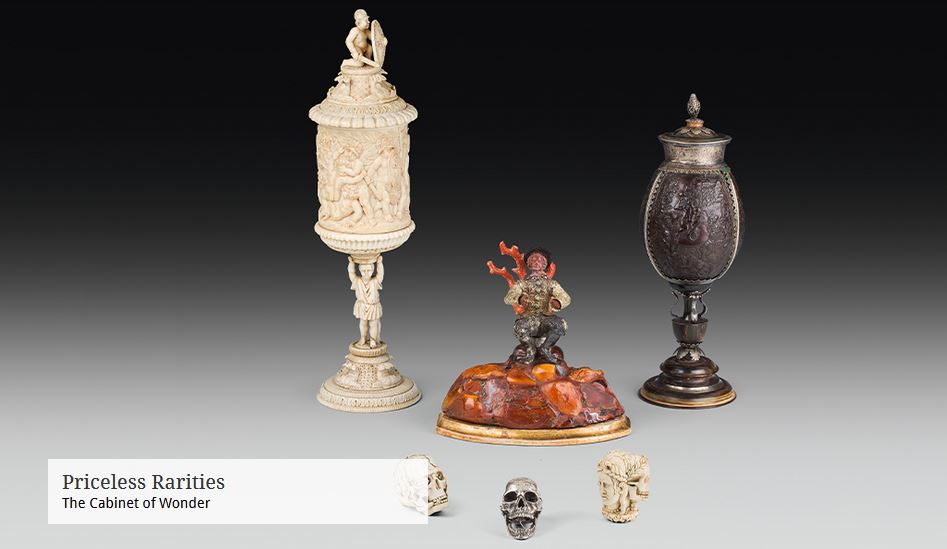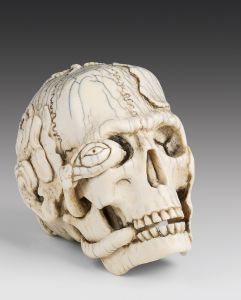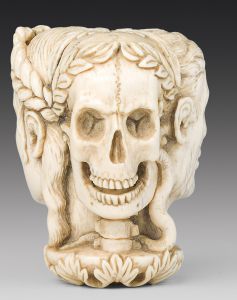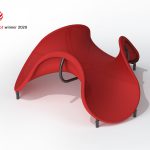The Auction House im Kinsky is offering a wonderful rare collection of objects from a cabinet of wonder, dating from the gothic period to the 19th century. The significance of these cabinets dates back to the Renaissance…
The awakening
Around the turn of the 15th century, something very strange happened. Men, until then dully tied to divine secrets, eternity and their own soul, opened their eyes and looked around.
So writes Egon Friedell in his “Cultural history of the Modern Age”.
Men realizes that he has reason, and strives to understand the rules of nature and art, which come together in the cabinet of wonder.
Here, ivory, ebony, agate, corals, silver and amber were exhibited, along with priceless automatons, artefacts from far away countries and exquisite works of art. Anything considered wondrous was collected by prices and rich commoners. However, the cabinet was never just a random mix of things – the diversity of its collection mirrored the diversity of the world.
Thematic diversity
The main themes were death and life (as in the Memento Mori heads in the auction), the four seasons, the four elements, the planets, plants and animals. The collectors categorized their treasures: Naturalia corresponded to god’s own creation, Arteficialia were men-created. Then there were Scientifica (scientific instruments) and Exotica (from foreign countries). The new and unfamiliar was wanted: the 16th century is often being referred to as the century of wonder. Also, discovery travels undertaken from the 15th to the 17th century brought back wonderful and unknown treasures to Europe.
These objects in the cabinet were priceless rarities on many levels. The coconut trophy illustrates this: the coconut was not only a Naturalia and an Exotica, but thanks to its elaborate setting also an Arteficialia. Besides, the trophy could serve as a cup, and the coconut was believed to have healing properties. Im Kinsky is happy to offer such a trophy in the upcoming summer auction.
The subtle art of showing off
The cabinet of wonders not only served to make people properly wonder, but was also used as a means of showing off. In Austria, the wording “cabinet of art and wonders” goes back to the collection in the castle of Ambras by Archduke Ferdinand II. (1529-1595). In its own time, it was known to be one of the main collections in the 16th century. It is the only cabinet of its kind that is still housed in its original place. On display are also pieces from older collections of emperor Friedrich III, Maximilian I. and Ferdinand I.
A more representative cabinet of wonders is the historic Green Vault in Dresden which offers a visual trip into the Baroque. The rooms have been open to the public since 1724, although in small groups only and, according to the king’s wishes, “in proper attire”.
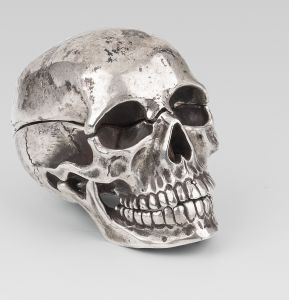
The standards of rationality
However, the cabinet of wonders did not suffice to the new standards of rationality dawning in the 17th century. Rene Descartes for instance complained that too much of a wonder cold be a bad thing, as it might prevent or pervert the use of reason. The cabinets were in due course replaced by the museums of today with their concise order, but the beauty of its artefacts keeps us wondering until today.
Text: Alexandra Markl



